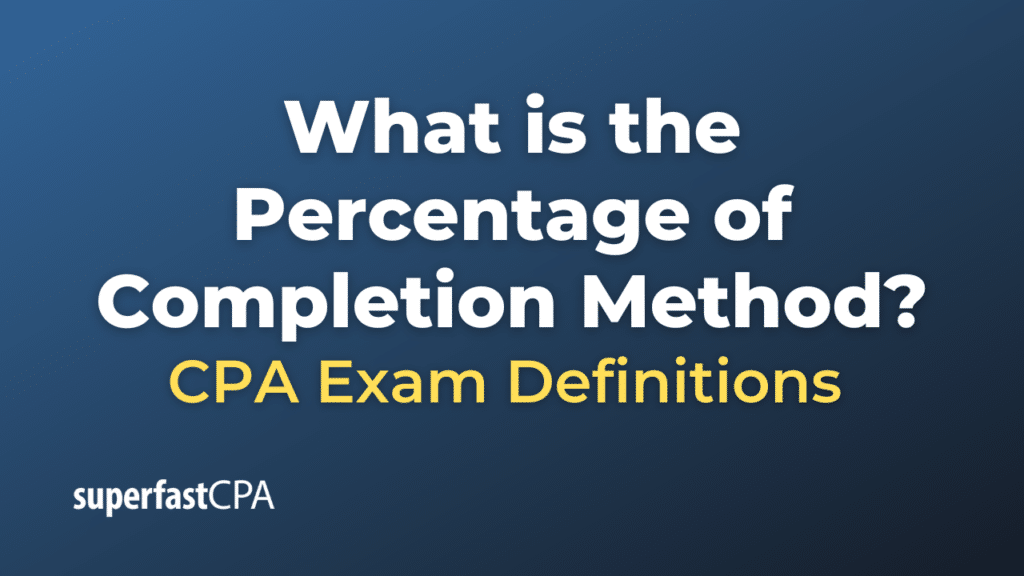Percentage of Completion Method
The percentage of completion method is an accounting technique used primarily in construction or long-term project contracts. It allows revenue and profit to be recognized as the contract progresses, rather than waiting until the project is fully completed.
The method calculates the ongoing recognition of revenue and expenses of long-term projects based on the proportion of work completed. The percentage of work completed is often estimated by comparing the costs incurred to date with the total expected costs of the contract.
This method of recognizing revenue and expenses can provide a more accurate reflection of the company’s financial position when it’s engaged in long-term projects. However, it requires careful estimates and can be subject to errors or biases if those estimates are off.
Here’s a simplified formula to understand the method:
Percentage of Completion = (Costs Incurred to Date / Total Estimated Costs) * 100%
Revenue Recognized = Contract Revenue * Percentage of Completion
It’s important to note that the use of the percentage of completion method is governed by specific accounting rules and standards. In the U.S., these rules are set forth by the Financial Accounting Standards Board (FASB), and internationally, they are part of the International Financial Reporting Standards (IFRS).
Example of the Percentage of Completion Method
Suppose a construction company has a contract to build a bridge for $5,000,000. The total cost estimated to complete the bridge is $4,000,000. After one year, the company has incurred costs of $2,000,000.
We can calculate the percentage of completion as follows:
Percentage of Completion = (Costs Incurred to Date / Total Estimated Costs) * 100% = ($2,000,000 / $4,000,000) * 100% = 50%
Now, we can calculate the amount of revenue to recognize:
Revenue Recognized = Contract Revenue * Percentage of Completion = $5,000,000 * 50% = $2,500,000
So, after one year, the company would recognize $2,500,000 in revenue for the bridge construction project. This method allows the company to recognize revenue gradually as the project progresses, rather than waiting until the entire project is complete.
Remember, the percentage of completion method requires accurate estimates of total costs, and the actual costs may end up being different from what was initially estimated. If there’s a change in the estimated total costs, the percentage of completion and the recognized revenue will need to be adjusted accordingly.












